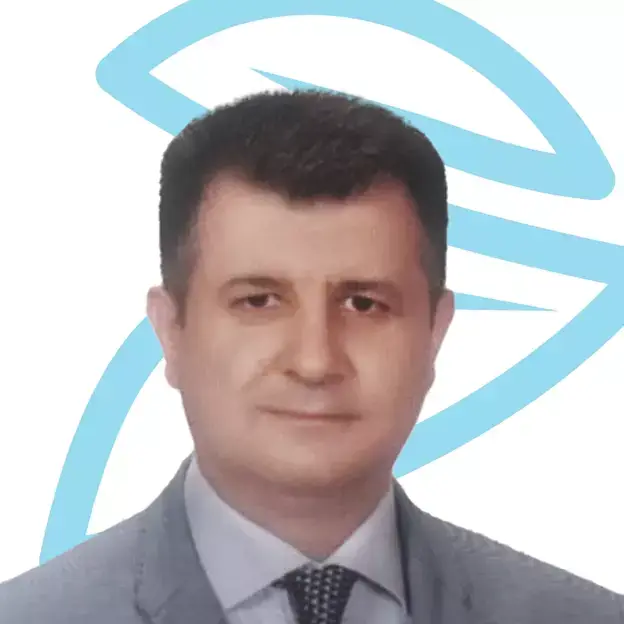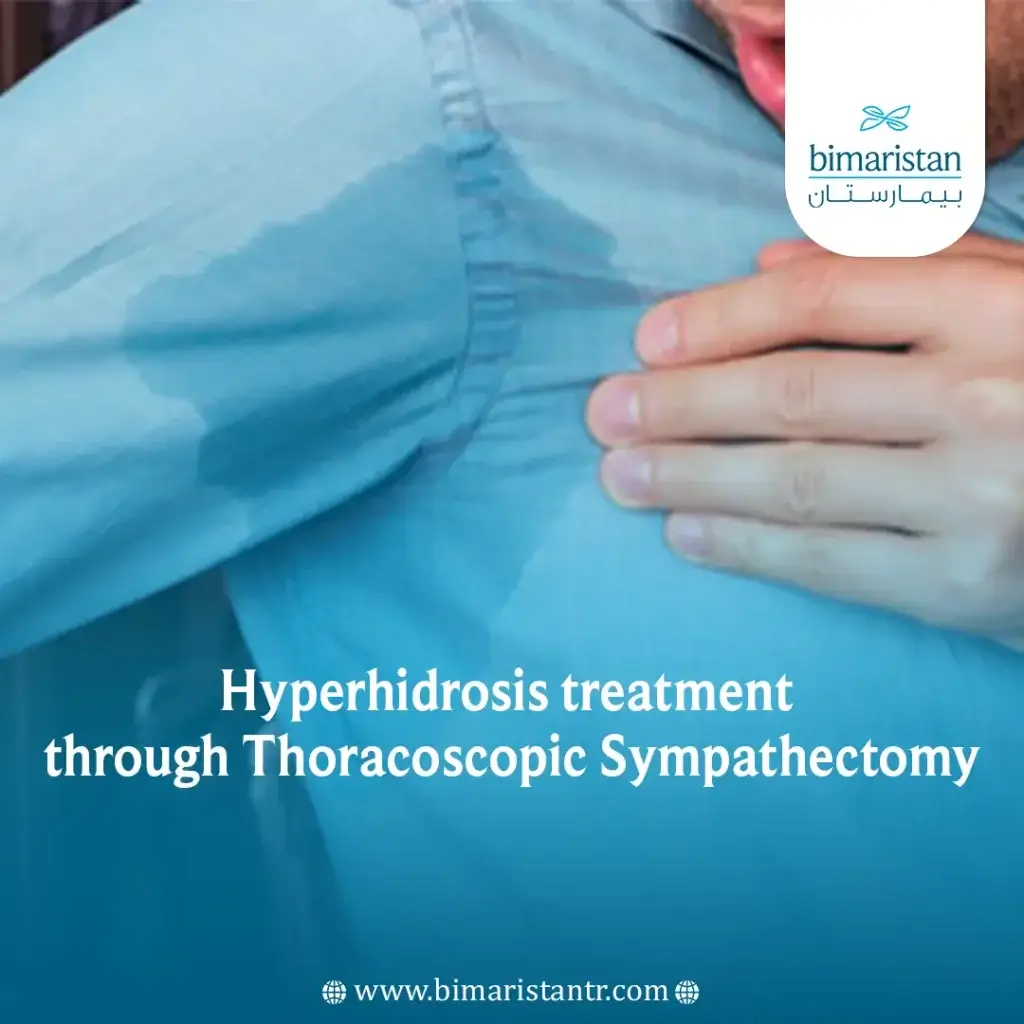Hyperhidrosis is a problem that many people suffer from. It can be said that Thoracoscopic sympathectomy is the last resort when other methods fail to treat hyperhidrosis.
The production of sweat is beneficial for humans as it helps regulate the temperature of the skin by evaporation, especially in hot weather. However, excessive sweating can be bothersome due to the foul odor it emits. So, What if this sweating occurs without physical exertion?
Excessive sweating can be observed more in the armpits, palms, and soles in some individuals, and it can be generalized to all parts of the body. If sweating on the hands, armpits, face, and head is very intense, then it may be worth considering treating hyperhidrosis by severing the sympathetic nervous system. In this article, we will learn about the advantages and disadvantages of this procedure and how it is performed.
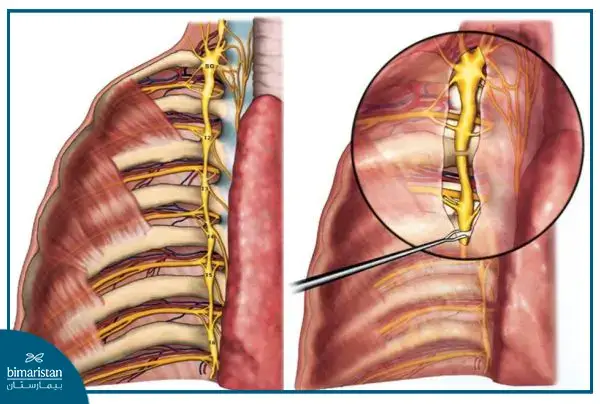
The first step towards hyperhidrosis treatment
When a patient decides to treat their hyperhidrosis, the doctor listens to their suffering and asks them some questions, then examines them physically. After that, they measure the amount of sweat produced to see if the patient is sweating more than a normal person usually does and determine whether the patient really needs medical intervention and treatment.
The doctor may request further tests before the operation, such as blood tests. The doctor should continue investigating the cause of hyperhidrosis because serious diseases such as tumors can sometimes cause severe hyperhidrosis (secondary sweating).
However, in many cases, the exact cause of hyperhidrosis cannot be determined accurately; excessive sweating may continue or intensify due to stress factors or physical activity, or several factors may converge to increase sweating and its continuation, such as:
- Psychological disorders
- Side effects of medications
- Hormonal irregularities
- Low blood sugar
- Tumors
As a first step, it may be reasonable to consider treating hyperhidrosis naturally. This includes quitting smoking and drinking less caffeine-containing beverages. Antiperspirants can also reduce sweat secretion. If these simple options do not help, we may resort to one of the specialized hyperhidrosis treatments.
Other treatment methods exist in addition to endoscopic thoracic sympathectomy. Studies emphasize the effectiveness of injecting botulinum toxin (Botox) in suppressing the effect of sympathetic nerves on sweat glands, leading to the treatment of underarm hyperhidrosis in particular.
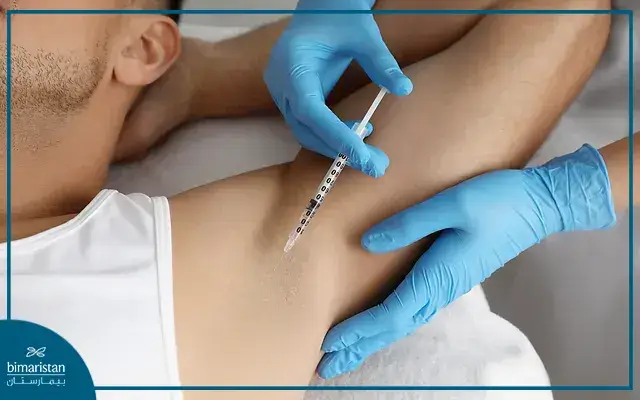
In some cases, specialized electrical stimulation in a water bath (iontophoresis) helps improve the condition of the hands or feet producing excessive sweat. If hyperhidrosis is only present in the armpits, removal of sweat glands through suction can be considered as one of the therapeutic methods.
If general measures fail to treat excessive sweating, considering Endoscopic Thoracic Sympathectomy for Hyperhidrosis as a final treatment for hyperhidrosis is necessary.
Endoscopic Thoracic Sympathectomy (ETS) surgery
The principle of Endoscopic Thoracic Sympathectomy (ETS surgery) is to separate the sympathetic nervous system responsible for hyperhidrosis in the hands and armpits. With the advancement of endoscopic techniques, it has been introduced into many surgical procedures, making it possible to dissect the sympathetic chain in the chest cavity through small surgical incisions.
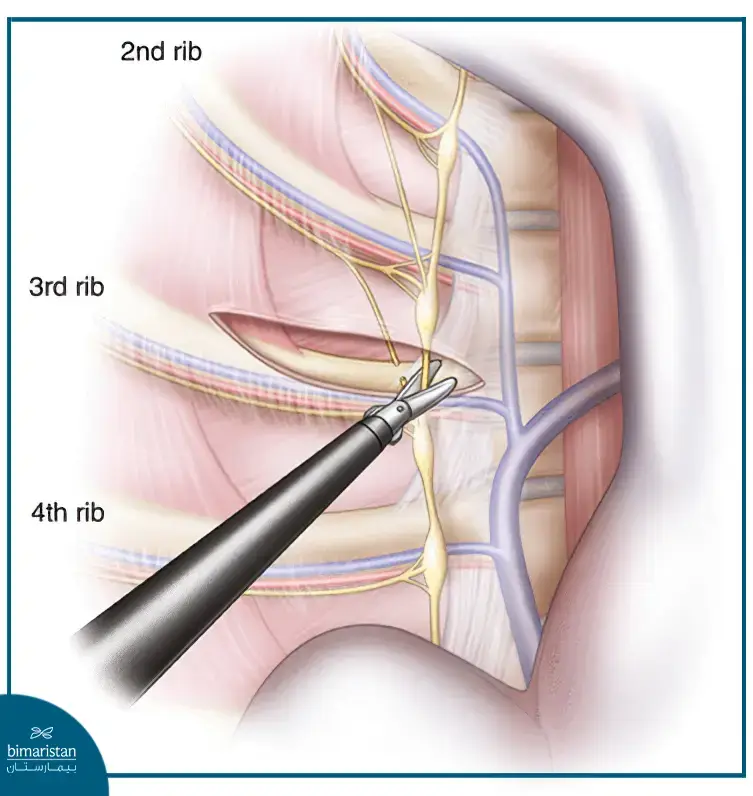
The sympathetic nervous system separation is used in cases of excessive sweating of the hands and armpits, and it’s also possible to use it with increased sweating of the feet (due to the separation of nerves in the lumbar region of the Spine) (Here it’s called Lumbar Sympathectomy). However, currently, ETS surgery for Hyperhidrosis is not often performed on the feet due to the risk of loss of sexual function.
Depending on the affected area, the sympathetic chain can be severed on the right, left, or both sides. The majority of cases require the procedure to be performed on both sides. After assessing the patient’s condition, the doctor may decide to perform both operations at once or to perform the procedure on one side only and then perform the second procedure at a later date.
Studies indicate that Endoscopic Thoracic Sympathectomy surgery is usually successful in treating severe hyperhidrosis, although it involves certain risks. However, these risks have not diminished patient satisfaction after the operation.
The price of treating hyperhidrosis through Thoracoscopic Sympathectomy may vary depending on the patient’s condition and the type of technology used to treat excessive sweating. In general, the cost of the Endoscopic thoracic sympathectomy (ETS) starts at $3,000, while the cost of the procedure in Europe and America starts at $7,000 and can be much higher than that.
How is the thoracoscopic sympathectomy procedure performed?
Thoracoscopic Sympathectomy is performed under general anesthesia, so you will be asleep during the operation and will not feel any pain.
- Small incisions are made in the skin at several locations on the chest wall to insert a thoracic endoscope equipped with a precise video camera and surgical instruments between the ribs.
- The cavity between the lungs and the chest wall is expanded to provide a better view of the surgical area with the help of carbon dioxide gas.
- The surgeon guides the surgical instruments with the endoscope until reaching the sympathetic nerve on the back wall of the chest, where it is ligated, cauterized, or partially removed.
- The gas is then removed from inside the chest at the end of the operation, allowing the lungs to return to their normal size. Drainage tubes may be used to remove any remaining air.
- After removing the surgical instruments, the small incisions are sutured.
The operation takes from one to two hours, and the patient usually returns home on the same day after the operation or the next day at most. You may need to stay for 3-4 days to undergo the operation and be able to travel back to your home country.
In case of unexpected results or complications, it may be necessary to modify the procedure or switch from endoscopic surgery to open surgery.
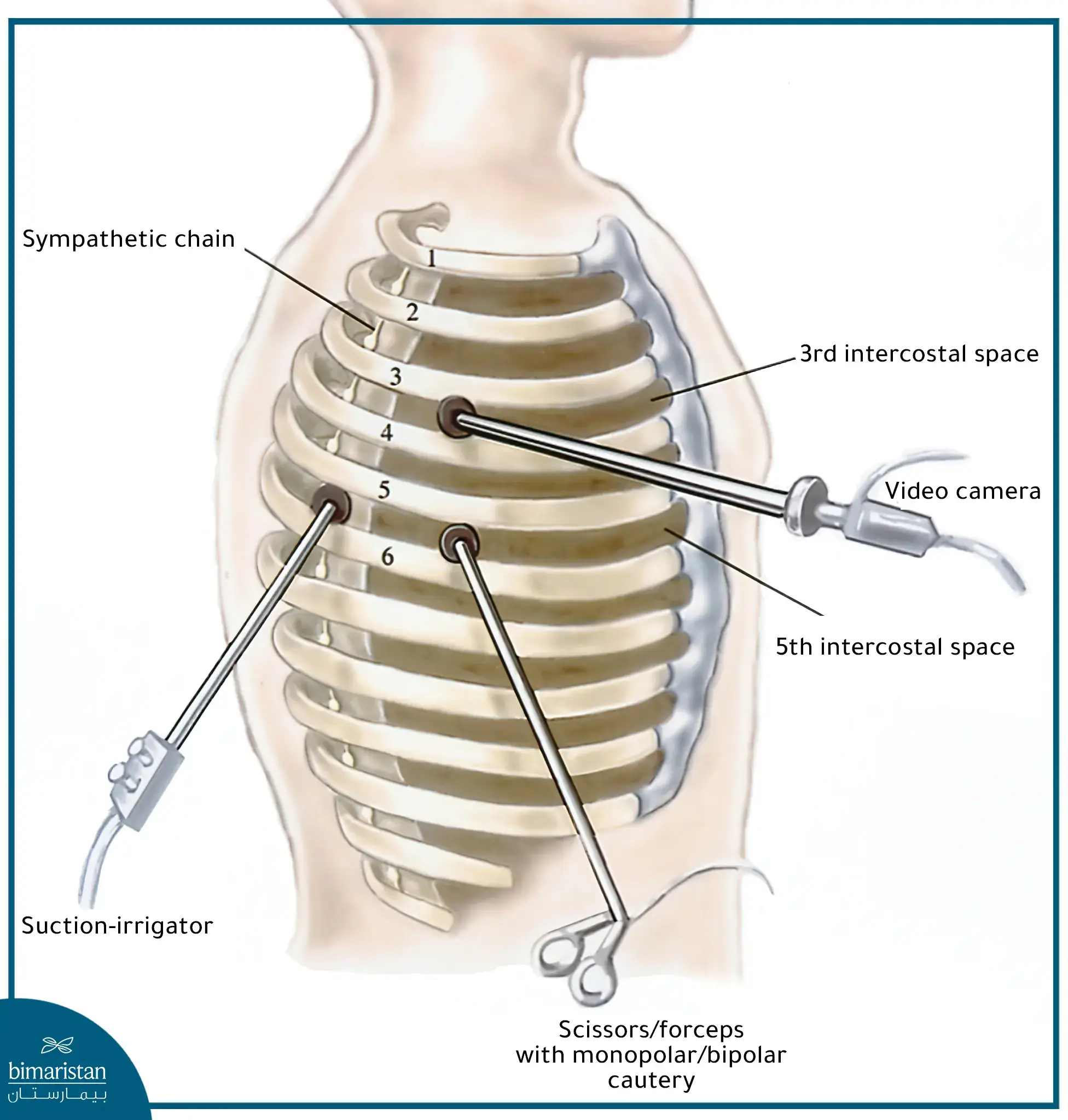
After thoracoscopic sympathectomy surgery
The endoscopic technique is characterized by its minimally invasive nature, so post-operative pain will be mild compared to open surgery. Scarring will be small and inconspicuous, and recovery will be faster. However, you may feel discomfort in your chest in the first three days after surgery.
You’ll be able to shower the day after the operation, but you’ll need to rest for a few days or a week before returning to work and resuming all your daily activities normally.
The recovery period may vary from person to person depending on their health condition; for example, diabetic and smoking patients usually take longer to recover from the effects of the operation.
After undergoing the operation, Bimaristan Medical Center will accompany you step by step and will stay in touch with you until you reach recovery and return to normal life. You can contact us 24/7 for any inquiries related to the surgery and its aftermath for free.
Complications of thoracoscopic sympathectomy
If the surgeon performing the operation lacks sufficient experience in using the endoscope, the following complications may occur:
- Allergic reactions to anesthesia of varying degrees of severity
- Infection at the surgical site or disruption of wound healing
- Injury to surrounding anatomical structures or organs during the operation
- Primary or secondary bleeding and occurrence of pleural effusion
- Nerve damage and occurrence of temporary sensory disturbances or paralysis
- Decrease in heart rate – and blood pressure may also decrease
- The patient may feel shortness of breath immediately after the operation if air remains in the chest cavity (Pneumothorax)
There are other complications unrelated to the doctor’s expertise and cannot be predicted, such as Horner’s syndrome, which is characterized by Eyelid Drooping (Ptosis), pupil constriction, and absence of facial sweating. However, this syndrome rarely occurs in the treatment of hyperhidrosis of the hands and armpits and occurs more frequently in those who undergo thoracoscopic sympathectomy surgery to treat excessive sweating of the face.
One of the side effects of the operation is also called Compensatory Sweating, which is excessive sweating occurring in another part of the body (such as the trunk area). The doctor cannot predict the location or severity of compensatory sweating before the operation, but a very small percentage of patients (about 1%) suffer from severe compensatory sweating.
In conclusion, excessive sweating is a medical problem that can lead to physical and psychological complications if left untreated. Hyperhidrosis treatment in some patients may be simple and does not require surgery, so we suffice with medications and antiperspirants, while others prefer to undergo sympathectomy surgery to permanently eliminate excessive sweating of the hands and armpits.
